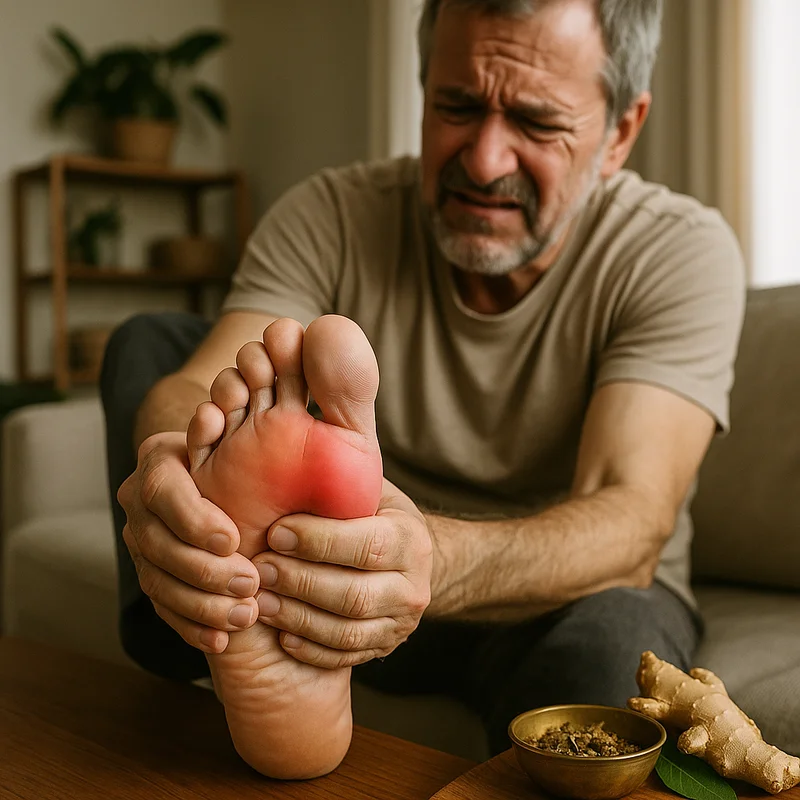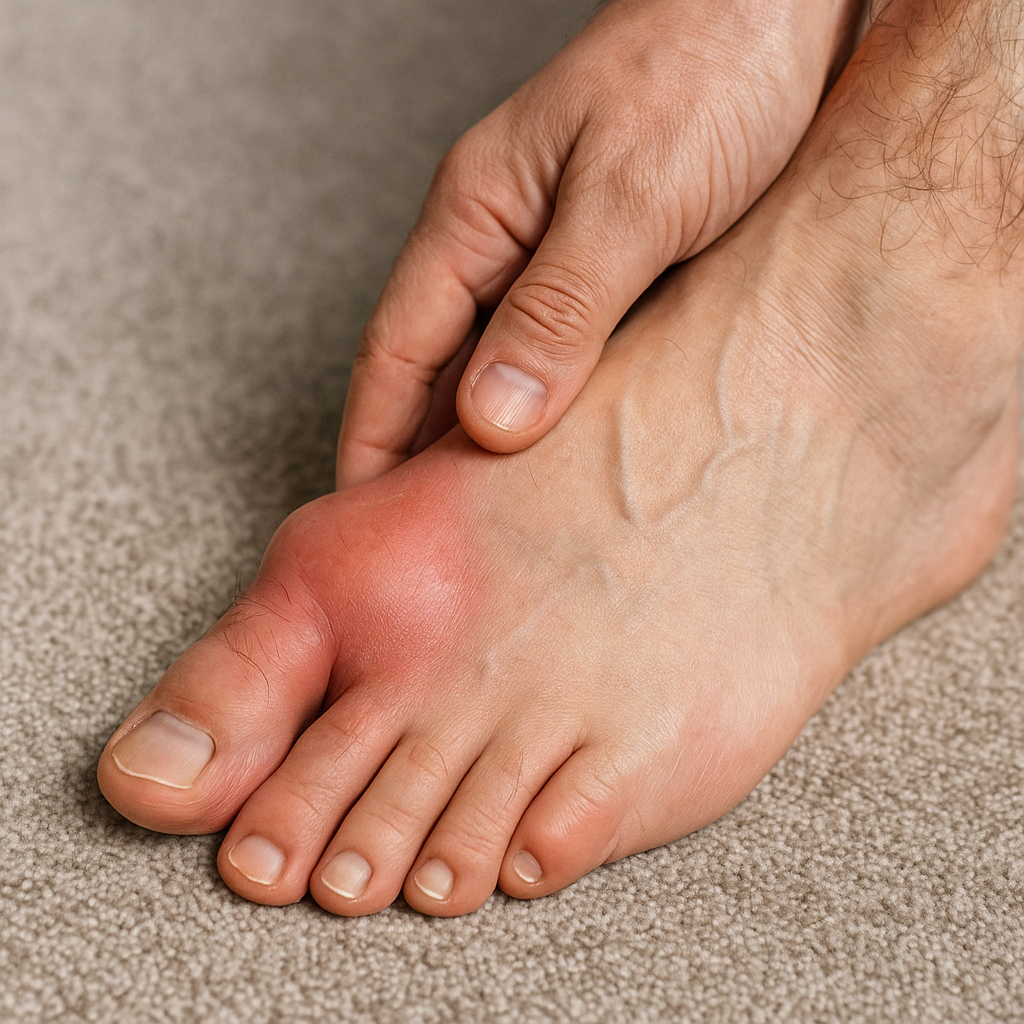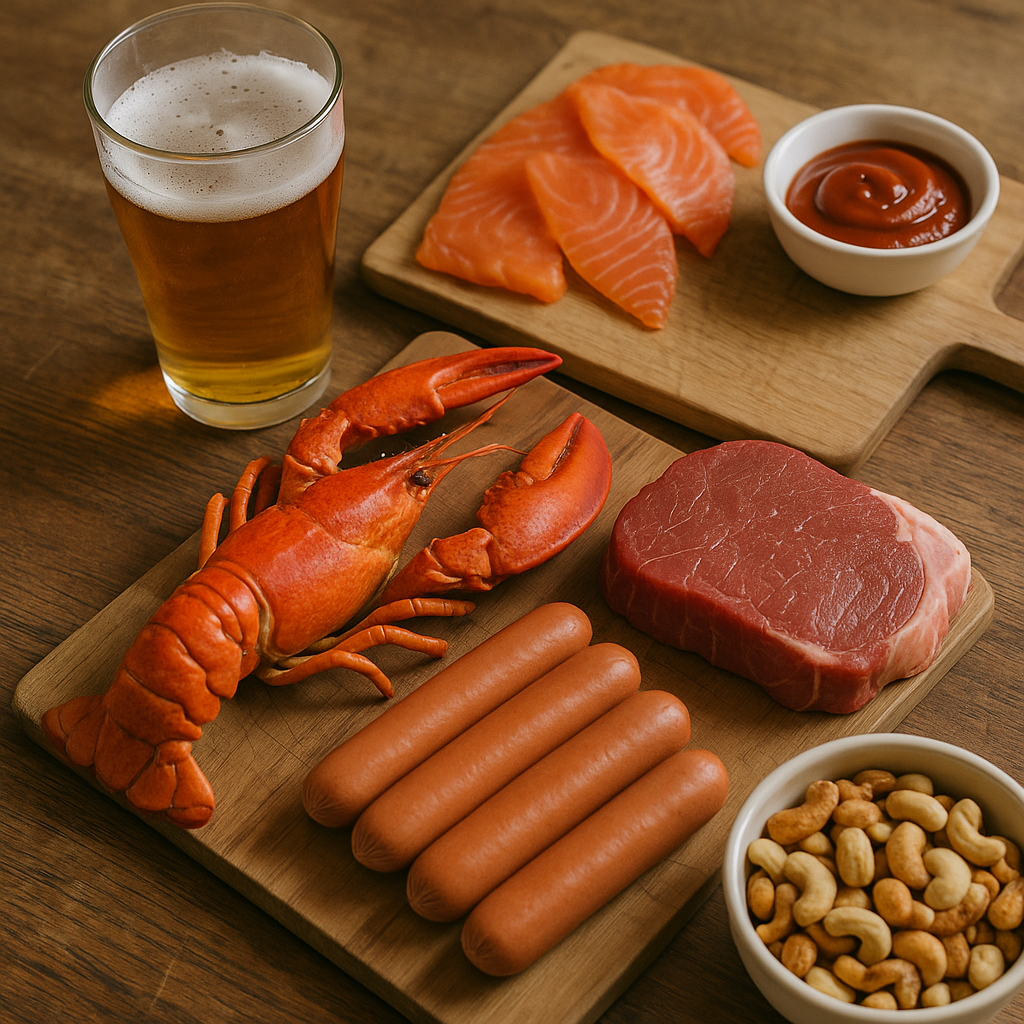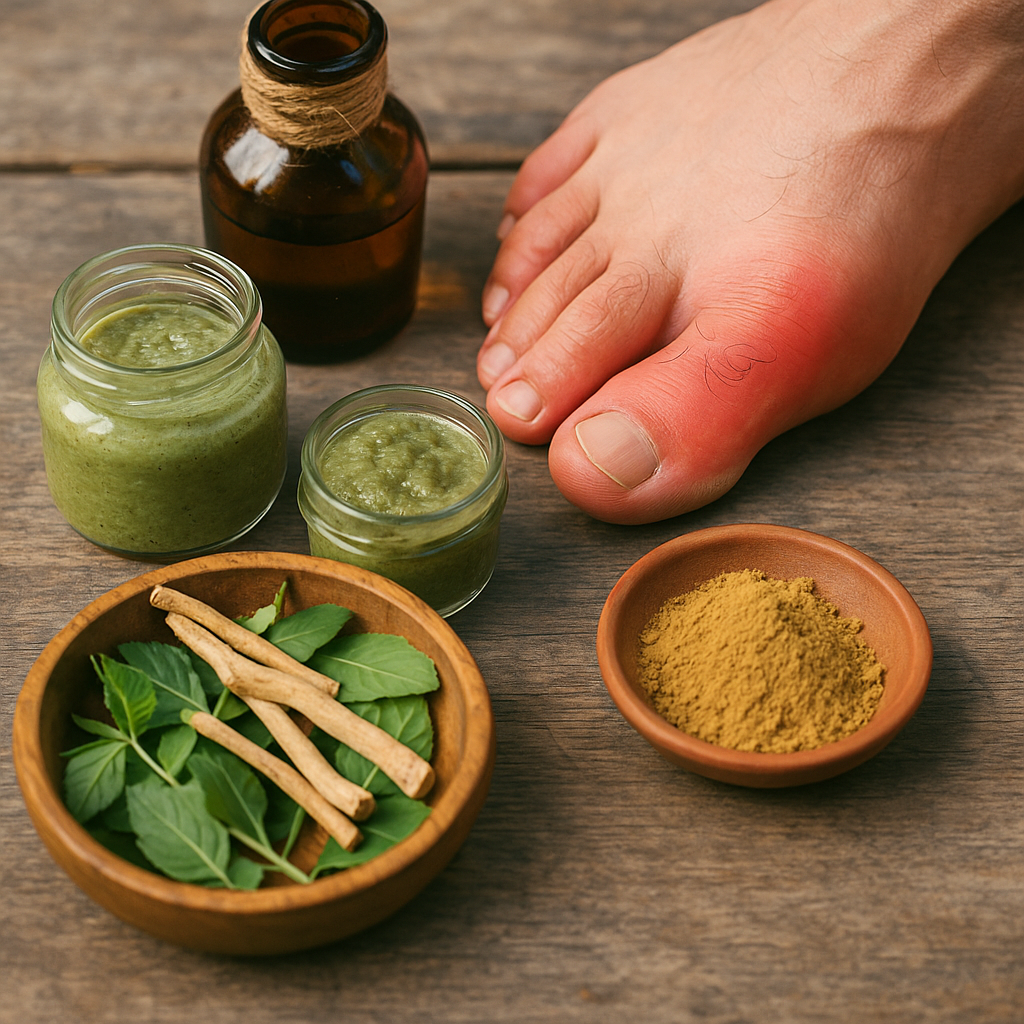Ask Ayurvedic doctor a question and get a consultation online on the problem of your concern in a free or paid mode. More than 2,000 experienced doctors work and wait for your questions on our site and help users to solve their health problems every day.
Shop Now in Our Store
What Causes Gout: Ayurvedic Perspective on Pain, Diet, and Healing

If you’ve ever felt that sudden, fiery pain in your big toe that comes out of nowhere—like it’s being stabbed with a hot needle—you’re not alone. Gout in the foot is brutal. It often shows up in the middle of the night, without warning. Maybe you had a rich meal, a drink too many, or just a stressful day. And then boom—pain, swelling, heat. It’s more than just physical discomfort. It messes with your sleep, your mood, and honestly, your sense of control.
In Ayurveda, gout isn’t just about “too much uric acid.” It’s a bigger story—one that involves digestion, diet, emotions, and lifestyle habits. And that perspective really clicked for me. I mean, sure, modern medicine has its explanations, but Ayurveda goes deeper. It looks at what causes gout through the lens of balance—or imbalance—in your body’s internal systems. Specifically, doshas (Vata, Pitta, Kapha) and something called ama, which is basically undigested waste or toxins.
So, if you’re navigating gout symptoms, and you’re curious about natural, sustainable ways to manage it—or even prevent it—Ayurveda might offer something worth exploring.

What Is Gout in Ayurveda?
In Ayurvedic terms, gout is often linked with a condition called Vatarakta. Literally translated, it refers to a combination of aggravated Vata dosha (responsible for movement, nerve impulses, dryness) and Rakta dhatu (blood tissue). This combination creates inflammation, pain, and those sharp, sudden flare-ups many of us recognize all too well.
Now, Ayurveda doesn’t just stop at naming the imbalance. It dives into how and why it happens—and, more importantly, what you can do about it. This isn’t a quick fix. It’s a lifestyle shift. But it’s empowering.
What Causes Gout According to Ayurveda
Ayurveda doesn’t talk about uric acid levels directly. Instead, it focuses on root causes—why your body isn't breaking down or eliminating waste properly in the first place. That's the Ayurvedic way: trace the imbalance back to its source.
Improper Digestion and Ama Accumulation
This is where it all starts. Poor digestion—what Ayurveda calls mandagni (weak digestive fire)—is often at the root of gout causes. When your digestion is sluggish, food doesn’t break down properly. This creates ama, a sticky, toxic sludge that clogs channels in the body and settles in the joints.
Imagine trying to run clear water through a pipe already full of gunk. That’s what happens in your joints when ama builds up. The result? Swelling, pain, stiffness, and all the usual gout symptoms.
Diet, Alcohol, Sleep, and Emotional Stress
This is where things get personal. For me, it wasn’t just food. Sure, I ate too many rich, heavy meals (and yes, I’ll get to foods that cause gout soon). But it was also the late nights, the glass of wine that turned into two, the skipped workouts, and the constant low-grade stress.
Ayurveda says that these things throw your doshas out of balance—especially Vata and Pitta. Add in poor sleep and emotional overload, and you’ve got a perfect storm. Not just for gout in foot, but for deeper systemic issues that Ayurveda tries to address holistically.

Foods That Cause Gout and What to Avoid
Let’s talk food. I know, I know—we don’t want to give up the stuff we love. But if you’ve ever had to limp around your living room with a swollen toe, you know it’s worth reevaluating what’s on your plate. Ayurveda doesn’t just slap a “bad” label on certain foods. It explains why they disrupt your body’s balance.
High-Purine Foods, Fermented Items, and Salt
Alright, so the conventional wisdom says avoid foods high in purines, right? Red meat, organ meats (like liver), seafood—especially anchovies, sardines, and shellfish—and, yes, alcohol. Particularly beer. These are all considered foods that cause gout, mainly because they break down into uric acid in the body.
But Ayurveda adds layers. It points out that overly salty, fermented, or aged foods aggravate Pitta dosha. Think soy sauce, pickles, aged cheeses, vinegar-heavy dressings. For someone dealing with gout symptoms, that extra Pitta can mean more inflammation and burning sensations.
Oh—and don’t underestimate salt. Ayurveda warns that excessive salt increases water retention, disturbs digestion, and can worsen pain in joints. So, yeah, maybe go easy on the chips and salty snacks during flare-ups.
Ayurvedic Food Principles to Reduce Flare-Ups
Instead of giving you a long “don’t” list, Ayurveda focuses on balance. It recommends alkaline, easy-to-digest foods that calm the system. Think light, cooked veggies, whole grains like rice and barley, and simple lentils (but not the heavy, spicy kind). Ghee is often encouraged in moderation—it soothes inflammation and helps digestion.
Also, timing matters. Eating heavy meals late at night? That’s a no-go. Gulping down cold smoothies first thing in the morning? Maybe not ideal either. Ayurveda encourages warm, cooked, spiced food—things that your agni (digestive fire) can actually handle.
I’ll admit it: shifting to Ayurvedic eating felt limiting at first. But after a few weeks of ginger tea, khichdi, and roasted veggies with turmeric and cumin, my joints didn’t ache as much. Coincidence? Maybe. But probably not.

Ayurvedic Treatment and Self-Care for Gout Relief
If you’re here, you’re probably wondering how to get immediate gout pain relief without popping pills all day. And yeah, sometimes medicine is necessary. But Ayurveda offers a gentler, more sustainable path.
Home Remedies for Gout Pain in Ayurveda
Let’s keep this simple. These are a few remedies that are commonly recommended—and I’ve personally tried most of them:
-
Castor oil packs: Warm castor oil applied to the joint, wrapped with flannel and heat. Sounds weird. Works like magic.
-
Epsom salt foot soaks: Not strictly Ayurvedic, but often recommended in tandem. Draws out heat and eases swelling.
-
Turmeric milk: Anti-inflammatory and grounding. Helps especially if you sip it warm before bed.
Herbal Medicines (e.g., Guduchi, Guggul, Triphala)
Herbs are a cornerstone of Ayurvedic medicine for gout. Here are a few classics:
-
Guduchi (Tinospora cordifolia): Detoxifying, anti-inflammatory, and said to strengthen immunity.
-
Guggul: A resin used for centuries in treating joint disorders. Best taken under guidance.
-
Triphala: Not just for digestion—it gently clears ama and regulates metabolism.
Immediate Gout Pain Relief Through Cooling Therapies
Okay, so when you’re in the middle of a flare-up and your joint feels like it’s hosting a bonfire, you’re not thinking about dosha balance. You just want the pain to stop. And fast.
Ayurveda does offer options that help immediate gout pain relief—but they work differently from popping ibuprofen. They focus on reducing Pitta and Vata while drawing out inflammation gently, without straining your liver or digestion.
-
Cold compresses with sandalwood or vetiver paste: These aren’t just cooling in temperature—they’re energetically cooling too. You can mix the powder with rose water or plain water and apply as a paste.
-
Aloe vera gel (straight from the plant if possible): Soothing, anti-inflammatory, and Pitta-pacifying.
-
Manjistha-infused oil massage: Slightly more advanced, but if you’ve got the oil, it’s fantastic. Always use gentle pressure—no deep tissue massage during a flare-up.
Also, during a flare, just stop. Cancel things. Rest. Elevate your foot. Don’t push through the pain. Gout isn’t subtle—it’s your body shouting, “Slow down!”
Conclusion
Gout isn’t just a “rich person’s disease” or some old-fashioned term for arthritis. It’s real. It hurts. And it can feel random and totally unfair—especially when you're trying to live a healthy life and suddenly your toe balloons up.
But here’s the thing: Ayurveda invites you to look at gout not as an enemy to fight, but as a signal. It’s your body asking for attention, for balance, for better digestion, and more mindful living. Whether it’s avoiding foods that cause gout, tuning in to how stress affects your body, or exploring home remedies for gout pain in Ayurveda, the path isn’t about perfection. It’s about consistency, compassion, and small adjustments.
Can Ayurveda cure gout forever? Maybe not in the instant-gratification sense. But it can guide you toward a lifestyle that makes flare-ups less frequent, less intense, and less scary. And that’s powerful.
Just remember: always check in with an experienced Ayurvedic practitioner—especially before trying herbs or treatments. Personalized guidance makes all the difference.
FAQs
Can Ayurveda cure gout permanently?
Ayurveda aims to treat the root causes, not just the symptoms. While it may not “cure” gout instantly, long-term Ayurvedic care can significantly reduce flare-ups and improve quality of life—especially when combined with diet and lifestyle changes.
Are bananas bad for gout?
Not necessarily. Bananas are generally considered cooling and Vata-pacifying in Ayurveda. However, if digestion is weak or ama is high, even healthy fruits can aggravate the issue. Moderation is key.
What’s the worst vegetable for gout?
From a Western purine-counting perspective: asparagus, spinach, and mushrooms are high-purine. But in Ayurveda, the bigger issue is how well you digest what you eat. If something creates ama, even if it’s a “good” vegetable, it might not be great for you.
Can stress cause gout?
Yes, absolutely. Chronic stress disrupts digestion, weakens agni, and contributes to ama buildup—all of which Ayurveda considers root causes of gout.
This article is checked by the current qualified Dr Sujal Patil and can be considered a reliable source of information for users of the site.

